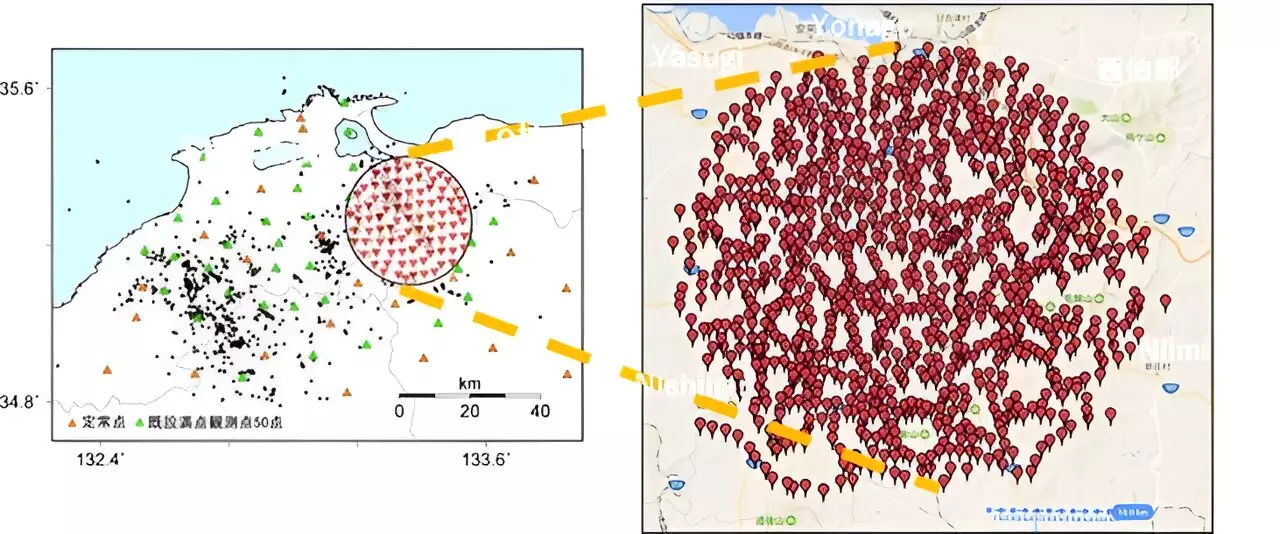Japan, positioned precariously along the Pacific Ring of Fire, stands as a testament to nature’s remarkable power and unpredictability. It is a nation renowned for its technological prowess and cultural richness, yet it is also one of the most earthquake-active regions in the world. The seismic activity ranges from thousands of minor tremors yearly to the alarming potential for a significant earthquake that could lead to catastrophic consequences. While the science surrounding earthquake prediction remains in its infancy, ongoing research continues to unravel the complexities of seismic behavior, offering insights that may one day improve forecasting accuracy.
The Role of the b-value in Seismology
Central to the study of earthquakes is a parameter known as the b-value, which serves as a crucial constant in seismology. This measure provides an understanding of the relationship between the frequency of earthquakes and their magnitudes. Professor Satoshi Matsumoto, a leading figure in recent research at Kyushu University and the University of Tokyo, outlined key observations regarding the b-value and its implications for earthquake prediction. A low b-value suggests a higher ratio of larger earthquakes, while a higher b-value indicates a predominance of smaller seismic events. This nuanced understanding can provide invaluable information when monitoring seismic activity and anticipating potential hazards.
Interestingly, the b-value can fluctuate across different locations and timeframes, with previous studies noting a decrease prior to significant seismic events. This decline in b-value has been attributed to increasing stress on geological faults. However, the latest study takes this insight further by proposing a connection between fault strength and the b-value, suggesting that the physical characteristics of the fault lines themselves influence the likelihood of major earthquakes.
In an effort to deepen the understanding of seismic activity, a research collaboration involving Kyushu University and the University of Tokyo examined the seismic behavior surrounding the catastrophic Western Tottori Earthquake, which struck in 2000 with a magnitude of 7.3. This comprehensive study employed an impressive network of over 1,000 seismic stations, allowing researchers to monitor seismic action with unparalleled precision. Over two decades later, the area continues to experience numerous aftershocks, underscoring the lasting impact of seismic events and the importance of continuous monitoring.
The extensive array of sensors not only detected overt tremors but also captured minute fault movements and orientations within the Earth’s crust. By analyzing this wealth of data, researchers were able to estimate the stress field acting upon each fault at the time of the quake, classifying them as either strong or weak. Such a detailed assessment of fault characteristics is vital because the orientation and strength of these faults ultimately dictate their likelihood of slipping under stress.
Connecting Fault Strength to Earthquake Probability
The researchers made a pivotal connection in understanding how faults behave under varying stress conditions. Matsumoto elucidates the concept: under specific stress levels, certain fault planes possess a more favorable orientation for slipping. In contrast, faults aligned unfavorably are considered weak, slipping more readily under pressure. Stronger faults, conversely, necessitate more exertion to trigger movement and exhibit distinctive directional properties.
From their calculations related to the stress field, the team ascertained the b-values for groups of fault events categorized by strength. The findings revealed that stronger faults were associated with lower b-values, indicating a higher probability of significant earthquakes occurring, whereas weaker faults exhibited higher b-values, suggesting a lower likelihood of major seismic episodes. This correlation implies that weaker faults may release stress earlier, thereby avoiding the buildup necessary for more substantial tremors.
As researchers endeavor to decipher the nuances of earthquake mechanics, their ultimate goal is the development of predictive models that can offer insights into seismic risks. Matsumoto acknowledges the inherent limitations in forecasting exact earthquake timings, yet emphasizes the importance of analyzing data related to fault orientation, fault strength, and b-values. This knowledge could help scientists recognize when a fault nears a critical threshold, signaling an imminent slip.
While it may be overly optimistic to claim that earthquake prediction is just around the corner, every incremental insight gained from comprehensive studies like this one draws researchers closer to this elusive “holy grail” of seismology. As described in the recent publication in *Nature Communications*, the intersection of fault characteristics and seismic activities offers hope in mitigating the unpredictability of earthquakes, ultimately safeguarding communities living in the shadow of these natural phenomena.


Leave a Reply